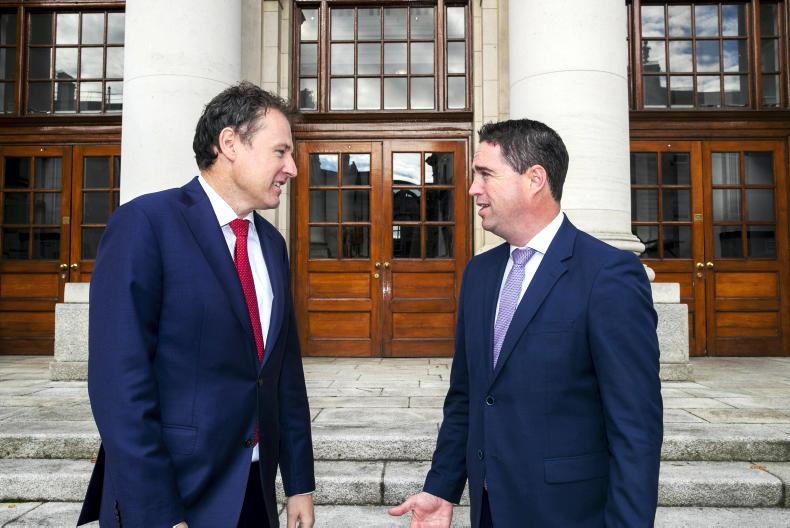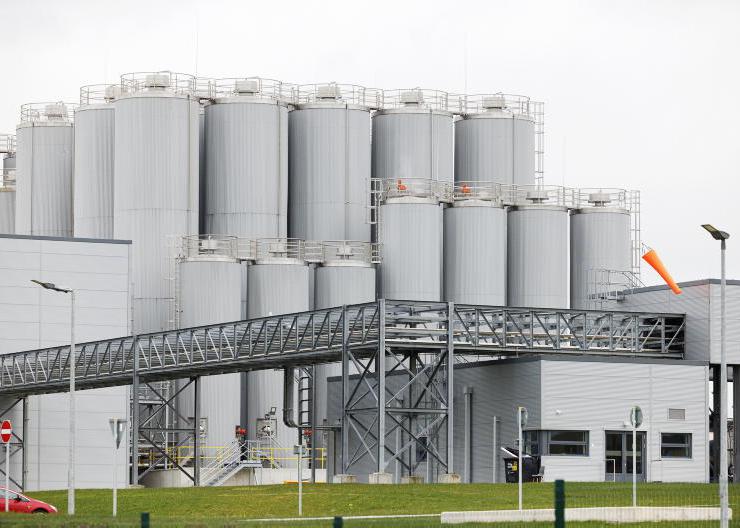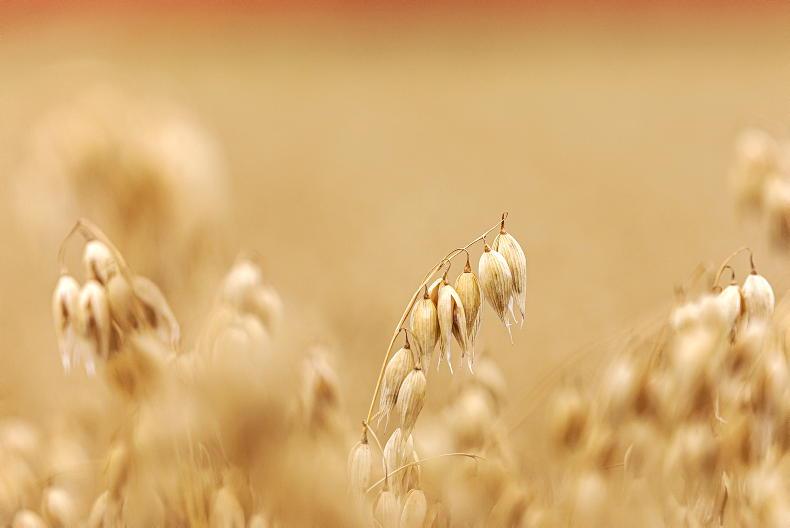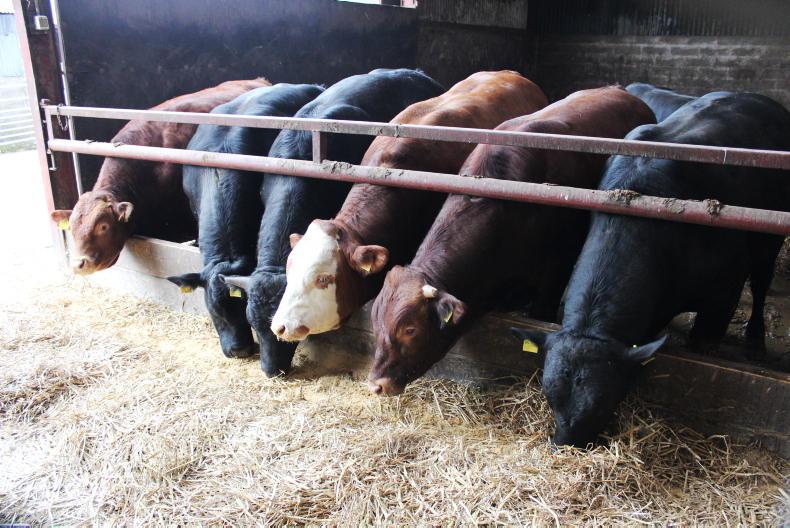It was standing room only when the session on reducing costs of production was discussed at Dairy Day last week, such is the demand for knowledge in the subject among dairy farmers. Cork dairy farmer Mike Bermingham showed his cost journey since 2019 and his budget for 2025, where he showed how he intends to reduce costs to less than €3.40/kg MS.
This means that for every one kilo of milk solids sold off the farm, Mike expects it to cost him €3.38 to produce in 2025, excluding his own and family labour, principle repayments and tax but including hired labour and full depreciation on buildings and machinery.
Teagasc’s Laurence Shalloo helped Mike to put the 2025 budget together and they were joined on the panel by Corrigan Sowman from New Zealand. Mike explained that himself and his wife Tina are farming together, milking 90 cows on a high but dry, north-facing farm about five miles outside Fermoy in Co Cork.
He says that grass growth rates are typically about two weeks’ behind Curtins Farm and that the farm used to consistently grow 14t DM/ha but is averaging 12t DM/ha since 2020 mostly due to weather related challenges.
Laurence went through the National Farm Survey data for the last few years backing up what both Mike said in terms of cost increases, showing that fertiliser and purchased forage costs increased by 26% between 2020 and 2023 and that concentrate costs increased by 17% over the same period.
When it comes to fixed costs, he said that the main increases were for energy and fuel, which went up 9% and a 13% increase in buildings and machinery depreciation. Laurence said that increases in depreciation were as a result of increased investment when milk price was good and also higher costs of machinery and building work in recent years.
Interestingly, Laurence said that increases in land leasing costs and wage costs are not borne out in the national figures with just a 2% increase in both between 2020 and 2023.
Bermingham budget
Tables 1 to 3 show the data that was displayed at Dairy Day on the financial performance of the Bermingham farm including the estimated figures for 2024 and the budgeted figures for 2025.
Total costs on Mike’s farm peaked in 2023 when they reached €4.67/kg MS, an increase of over €1.60 on the pre-COVID years when total costs were around €3/kg MS. In 2024, total costs fell by almost 0.60c/kg MS to €4.08/kg MS with the main savings in feed. “For the past two or three years we bought in a lot of silage from our neighbours at 300 or 400 bales a year. This is because we haven’t been growing enough grass. We were only growing between 11t and 12t DM/ha and we need to be hitting 13t DM.”
Mike had over 70t of silage left over at the end of last winter and even though he fed around 150 bales in autumn, he reckons there will be plenty of silage left over after this winter. He says that while the amount of meal fed in 2024 was the highest ever at about 1.35t/cow, the reductions in feed prices have helped to cushion that cost. In total, feed costs in 2024 are back 26c/kg MS compared to 2023.
The amount of milk solids produced was also back in 2023, which means that the cost per kilo went up. Mike says that the herd typically produces 530kg to 540kg MS/cow but that this dropped back to 500kg MS/cow in 2023. In the budget for 2025, there is 0.63kg/MS for feed costs which is presuming a total of about 1t/cow to be fed in 2025 with the same price per tonne as it is now. Mike says they have included some purchased forage in the budget but not as much as previous years.
Contractor costs are also expected to come down in 2025. In 2024, all bales were made as the silage quality in the outfarm wasn’t good, so all bales were made to segregate silage easier. Mike says that this land was reseeded in 2024 which increased contractor costs so will less reseeding in 2025 and all pit silage the contractor charges are set to come back.

Mike Bermingham farms a few miles outside of Fermoy in Co. Cork
Fertiliser costs are also set to come back in the 2025 budget. Mike says that the plan is to buy 12t of 18:6:12 and 17t of protected urea and at current prices this will cost 30c/kg MS, down from 43c/kg MS in 2023 and 68c/kg MS in 2023. Total variable costs for 2025 are projected to be €1.87/kg MS in 2025, back from €2.54/kg MS in 2024.
Looking at the trend in fixed costs, Laurence pointed out that significant cost increases occurred in bank interest, fuel and energy, with both adding about 30c/kg MS to costs between 2020 and 2023. Interest rates more than doubled in 2023 and while it has come back in 2024, Mike says it’s something that he needs to look into.
There is little change in fixed costs in the 2025 budget when compared against 2024 costs. Total fixed costs in 2024 are expected to be €1.54/kg MS while the 2025 budget is €1.51kg MS. Machinery costs are rising slightly in 2025 due to expected higher repairs and maintenance with 2024 being lower than normal. Laurence pointed out that a tractor lease is expected to finish in 2026 which will reduce machinery costs by 12c or 13c/kg MS.
Most other fixed costs are staying more or less the same, with no substantial changes to wages, land lease or fuel or energy costs expected.
Margin
For the gross output, the base milk price was predicted at 36c/l for 2025 which comes to €5.57/kg MS when stock sales and subsidy payments are included. Laurence said is probably conservative given where the markets are at currently but he said it’s important to be conservative on milk price;
“We know now about volatility, we saw what happened in 2023 and we got caught and caught badly and there’s a lot of pain. We need to make sure our budgets work at low milk prices. If we can get this budget to work at 36c/l base price we’re in a really good position,” he said.
Laurence said that the total costs in 2025 are predicted to be €3.38/kg MS which is not too dissimilar to what they were in the 2019/2020 period which he said is good going considering the increases in services costs.
Mike said that if he can get back to consistently growing 13t DM/ha of grass it will reduce a lot of the costs and make life much easier by not having to feed out silage. On the overall financial performance, Laurence said that it’s very strong;
“Mike has very good performance per hectare, roughly producing 1,250kg MS/ha and with the margin he has per milk solid it’s very easy to scale that up. Sometimes we talk a lot about cow numbers and we need lots of cows to make a lot of profit but Mike is milking 90 cows and is throwing off a lot of money.”
With the stocking rate at 2.3 cows/ha on the milking platform, Mike was asked if increasing the stocking rate and milking more cows would be more profitable. In response, Mike said it would take a lot more effort on his part as he’d be feeding a lot more silage to milking cows;
“I see there this spring, we were feeding silage to the herd until 20 April. When the silage went out the milk yield went up by 2l/cow and the protein went up by 0.1%. That was extra money by doing nothing just feeding them more grass and much less effort for me,” he said.
Up to 10 years ago there was a board on costs and profit at every dairy farm walk and it was widely discussed for everyone to learn and benchmark. Now it’s like a code of omerta has set in and its much harder to find information on costs and what farmers should be targeting as costs of production. As a result, financial management and budgeting skills are being lost and young farmers aren’t getting exposed to it. Laurence Shalloo was clear at Dairy Day that the target before own labour is €3/kg MS for costs. Most farmers are still on the cost reduction journey so its an ambitious target. We need more discussion on costs at Teagasc events and on these pages. Who is going to share their costs next?
In short
Mike Bermingham is milking 90 cows Co Cork.Total costs peaked at €4.67/kg MS in 2023 and are down to €3.37/kg MS in 2024 before own labour, principle repayments and tax.The main cost reductions will come in feed, forage and fertiliser costs.
The amount of grass grown and utilised will have a big bearing on achieving the budget.
It was standing room only when the session on reducing costs of production was discussed at Dairy Day last week, such is the demand for knowledge in the subject among dairy farmers. Cork dairy farmer Mike Bermingham showed his cost journey since 2019 and his budget for 2025, where he showed how he intends to reduce costs to less than €3.40/kg MS.
This means that for every one kilo of milk solids sold off the farm, Mike expects it to cost him €3.38 to produce in 2025, excluding his own and family labour, principle repayments and tax but including hired labour and full depreciation on buildings and machinery.
Teagasc’s Laurence Shalloo helped Mike to put the 2025 budget together and they were joined on the panel by Corrigan Sowman from New Zealand. Mike explained that himself and his wife Tina are farming together, milking 90 cows on a high but dry, north-facing farm about five miles outside Fermoy in Co Cork.
He says that grass growth rates are typically about two weeks’ behind Curtins Farm and that the farm used to consistently grow 14t DM/ha but is averaging 12t DM/ha since 2020 mostly due to weather related challenges.
Laurence went through the National Farm Survey data for the last few years backing up what both Mike said in terms of cost increases, showing that fertiliser and purchased forage costs increased by 26% between 2020 and 2023 and that concentrate costs increased by 17% over the same period.
When it comes to fixed costs, he said that the main increases were for energy and fuel, which went up 9% and a 13% increase in buildings and machinery depreciation. Laurence said that increases in depreciation were as a result of increased investment when milk price was good and also higher costs of machinery and building work in recent years.
Interestingly, Laurence said that increases in land leasing costs and wage costs are not borne out in the national figures with just a 2% increase in both between 2020 and 2023.
Bermingham budget
Tables 1 to 3 show the data that was displayed at Dairy Day on the financial performance of the Bermingham farm including the estimated figures for 2024 and the budgeted figures for 2025.
Total costs on Mike’s farm peaked in 2023 when they reached €4.67/kg MS, an increase of over €1.60 on the pre-COVID years when total costs were around €3/kg MS. In 2024, total costs fell by almost 0.60c/kg MS to €4.08/kg MS with the main savings in feed. “For the past two or three years we bought in a lot of silage from our neighbours at 300 or 400 bales a year. This is because we haven’t been growing enough grass. We were only growing between 11t and 12t DM/ha and we need to be hitting 13t DM.”
Mike had over 70t of silage left over at the end of last winter and even though he fed around 150 bales in autumn, he reckons there will be plenty of silage left over after this winter. He says that while the amount of meal fed in 2024 was the highest ever at about 1.35t/cow, the reductions in feed prices have helped to cushion that cost. In total, feed costs in 2024 are back 26c/kg MS compared to 2023.
The amount of milk solids produced was also back in 2023, which means that the cost per kilo went up. Mike says that the herd typically produces 530kg to 540kg MS/cow but that this dropped back to 500kg MS/cow in 2023. In the budget for 2025, there is 0.63kg/MS for feed costs which is presuming a total of about 1t/cow to be fed in 2025 with the same price per tonne as it is now. Mike says they have included some purchased forage in the budget but not as much as previous years.
Contractor costs are also expected to come down in 2025. In 2024, all bales were made as the silage quality in the outfarm wasn’t good, so all bales were made to segregate silage easier. Mike says that this land was reseeded in 2024 which increased contractor costs so will less reseeding in 2025 and all pit silage the contractor charges are set to come back.

Mike Bermingham farms a few miles outside of Fermoy in Co. Cork
Fertiliser costs are also set to come back in the 2025 budget. Mike says that the plan is to buy 12t of 18:6:12 and 17t of protected urea and at current prices this will cost 30c/kg MS, down from 43c/kg MS in 2023 and 68c/kg MS in 2023. Total variable costs for 2025 are projected to be €1.87/kg MS in 2025, back from €2.54/kg MS in 2024.
Looking at the trend in fixed costs, Laurence pointed out that significant cost increases occurred in bank interest, fuel and energy, with both adding about 30c/kg MS to costs between 2020 and 2023. Interest rates more than doubled in 2023 and while it has come back in 2024, Mike says it’s something that he needs to look into.
There is little change in fixed costs in the 2025 budget when compared against 2024 costs. Total fixed costs in 2024 are expected to be €1.54/kg MS while the 2025 budget is €1.51kg MS. Machinery costs are rising slightly in 2025 due to expected higher repairs and maintenance with 2024 being lower than normal. Laurence pointed out that a tractor lease is expected to finish in 2026 which will reduce machinery costs by 12c or 13c/kg MS.
Most other fixed costs are staying more or less the same, with no substantial changes to wages, land lease or fuel or energy costs expected.
Margin
For the gross output, the base milk price was predicted at 36c/l for 2025 which comes to €5.57/kg MS when stock sales and subsidy payments are included. Laurence said is probably conservative given where the markets are at currently but he said it’s important to be conservative on milk price;
“We know now about volatility, we saw what happened in 2023 and we got caught and caught badly and there’s a lot of pain. We need to make sure our budgets work at low milk prices. If we can get this budget to work at 36c/l base price we’re in a really good position,” he said.
Laurence said that the total costs in 2025 are predicted to be €3.38/kg MS which is not too dissimilar to what they were in the 2019/2020 period which he said is good going considering the increases in services costs.
Mike said that if he can get back to consistently growing 13t DM/ha of grass it will reduce a lot of the costs and make life much easier by not having to feed out silage. On the overall financial performance, Laurence said that it’s very strong;
“Mike has very good performance per hectare, roughly producing 1,250kg MS/ha and with the margin he has per milk solid it’s very easy to scale that up. Sometimes we talk a lot about cow numbers and we need lots of cows to make a lot of profit but Mike is milking 90 cows and is throwing off a lot of money.”
With the stocking rate at 2.3 cows/ha on the milking platform, Mike was asked if increasing the stocking rate and milking more cows would be more profitable. In response, Mike said it would take a lot more effort on his part as he’d be feeding a lot more silage to milking cows;
“I see there this spring, we were feeding silage to the herd until 20 April. When the silage went out the milk yield went up by 2l/cow and the protein went up by 0.1%. That was extra money by doing nothing just feeding them more grass and much less effort for me,” he said.
Up to 10 years ago there was a board on costs and profit at every dairy farm walk and it was widely discussed for everyone to learn and benchmark. Now it’s like a code of omerta has set in and its much harder to find information on costs and what farmers should be targeting as costs of production. As a result, financial management and budgeting skills are being lost and young farmers aren’t getting exposed to it. Laurence Shalloo was clear at Dairy Day that the target before own labour is €3/kg MS for costs. Most farmers are still on the cost reduction journey so its an ambitious target. We need more discussion on costs at Teagasc events and on these pages. Who is going to share their costs next?
In short
Mike Bermingham is milking 90 cows Co Cork.Total costs peaked at €4.67/kg MS in 2023 and are down to €3.37/kg MS in 2024 before own labour, principle repayments and tax.The main cost reductions will come in feed, forage and fertiliser costs.
The amount of grass grown and utilised will have a big bearing on achieving the budget. 









SHARING OPTIONS